Romania road trip: Sibiu's main attraction - The bridge of lies and Casa Calfelor
From Piața Mică to The Bridge of lies
We get down the Council Tower and start strolling the Piața Mică being always surrounded by the “eyes” of each building. Going forward, we step on the famous bridge known as “Podul Minciunilor” translated as “The bridge of lies”.
A romatic symbol of the city, the metallic construction dating back to the middle of the 19th century, is now a pedestrian passage way that makes the connection between The Little Square and The Huet Square, being built above the Ocnei street.
From a language misunderstanding to many legends
The name “the bridge of lies” seems charming, intriguing and arouses people’s curiosity about it. The name comes more or less from a language misunderstanding and, somehow, the locals started to call it “the bridge of lies” and, of course, various legends begun to be spread.
For example, it is said that the bridge is a meeting point for couples, where the in love humans swear eternal love and the girls claim to be virgins, but only until the wedding night when the truth comes to light and it turns out that they are actually liars, thus, the girls are thrown away over the bridge.
Most of the stories and myths have something to do with the subject of love. In a different legend, the men are counted as liars, so it is said that cadets studying at the Military Academy are coming on the bridge to meet with the young ladies and promise them love or honesty, but, actually, the men forget about the girls and are leaving them to wait in vain, for nothing.
Another legend that has anything to do with love and which probably comes instead from the tumultuous medieval background of the city says that the witches whose predictions are not fulfilled are thrown from this bridge as a punishment for lying.
Should you lie or not?
If people claim something while staying on the Bridge of Lies, are they really saying the truth, or just lying? We don’t know, but at least a thing is clear: from the bridge people are offered two wonderful panoramas, one is over “the city from above” which includes the entire Piața Mică with its main character The Council Tower and, the second view over “the city from Below”, that consists in a wide landscape with red roofs and colorful houses.
Another great landmark of the city
Let’s hope we don’t say any lies on the bridge while sitting and passing the bridge. After crossing it, we enter the Piața Huet where a large construction is totally dominating the square, namely, the Evanghelical Cathedral of Sibiu, which we already noticed from the Council Tower, but now, when we are not up, but down by its side, the building appears even bigger, enormous.

The Cathedral dating back to the 14th century is one of the oldest of this kind in Romania and has an impressive Gothic architecture. The exterior of the construction is overlooked by the high tower which is the second highest bell tower in Transylvania.
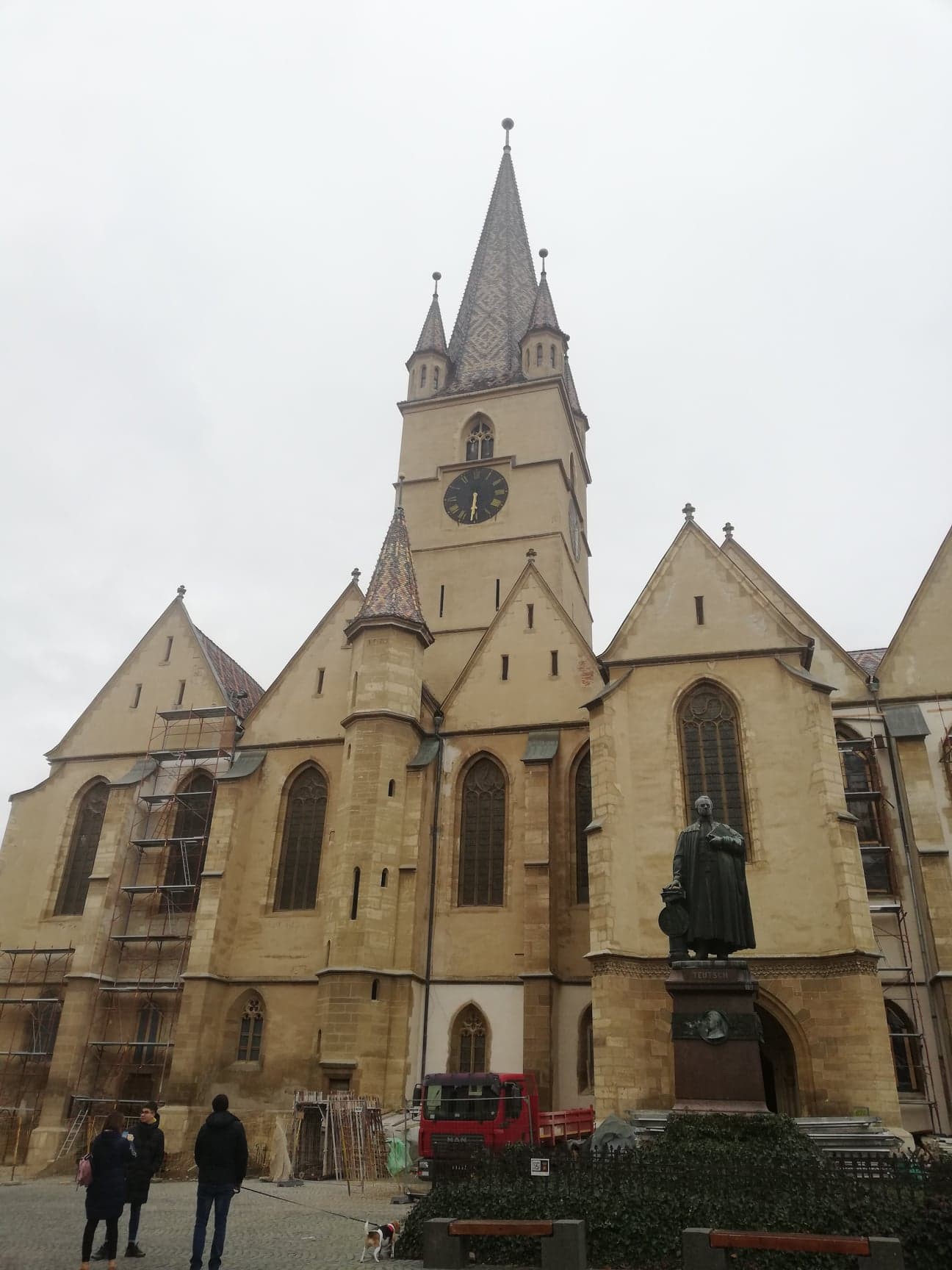
In the Huet Square, in front of the cathedral is placed a statue representing the bishop of the Evanghelical Church of Transylvania, more exactly, George Daniel Teutsch.
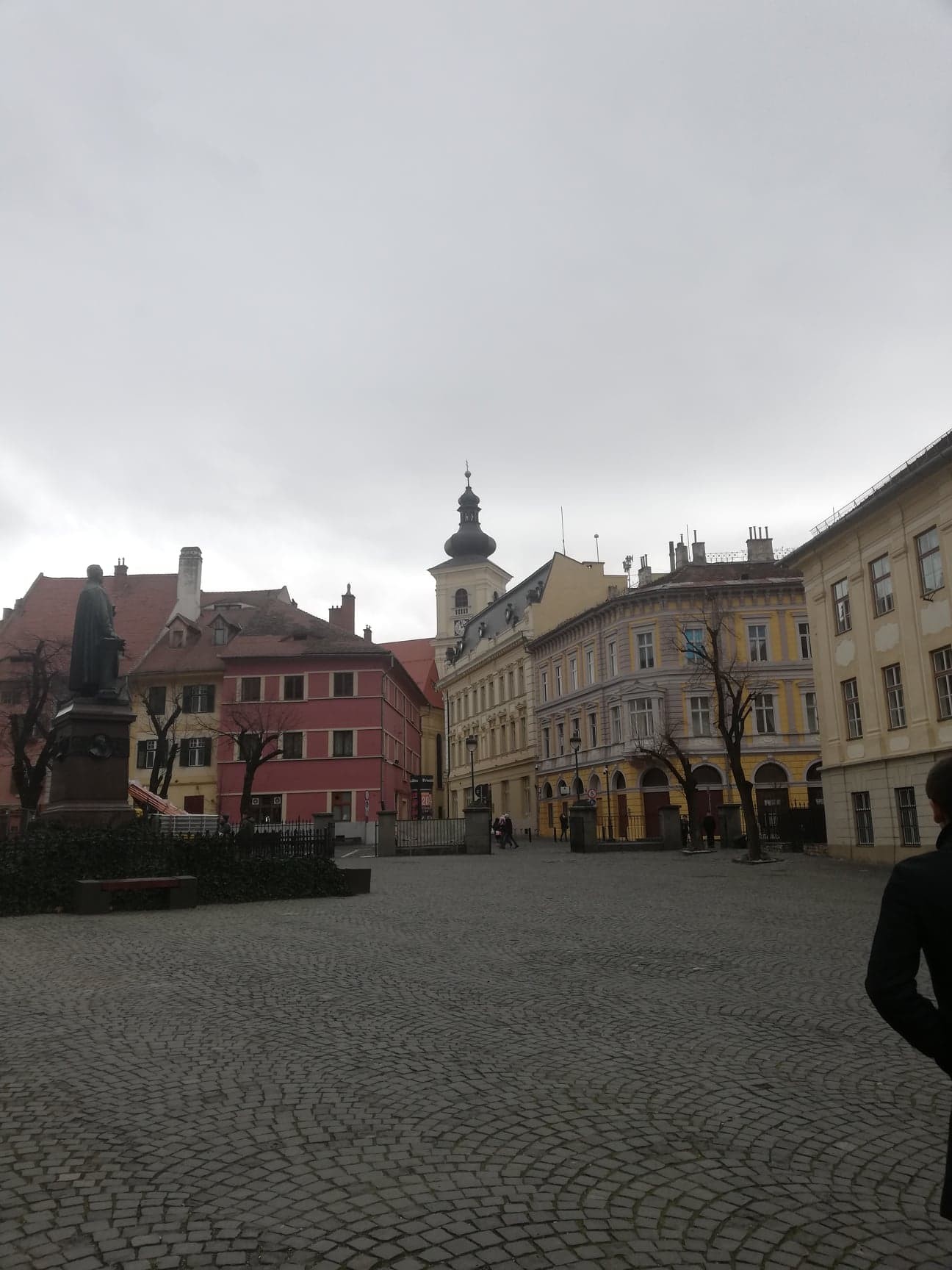

The history of the guilds and their arrival and development in Sibiu
Besides the huge cathedral, in Piața Huet, at number 3, we find another historical monument, “Casa Calfelor”, translated as “The House of the Journeyman” which is not so imposing as the church, but it has, on the other hand, a very interesting and beautiful story.
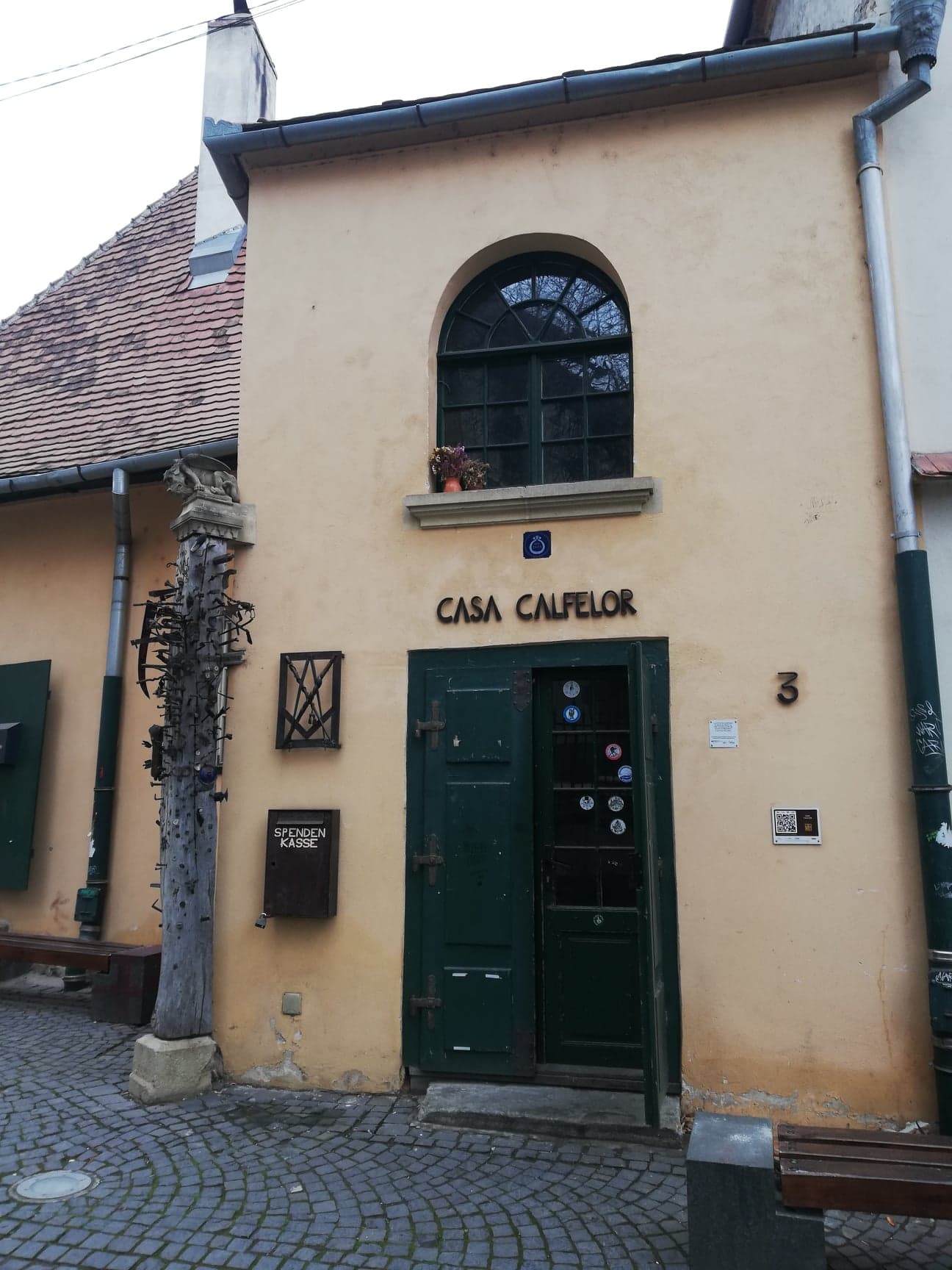
Actually, the story has its roots back in the Middle Ages when, between the 14th and 16th century, the city of Sibiu goes through a period of glory in terms of economic life and, most importantly, in the development of crafts, thus the products made by the guilds of Sibiu are highly sought after.
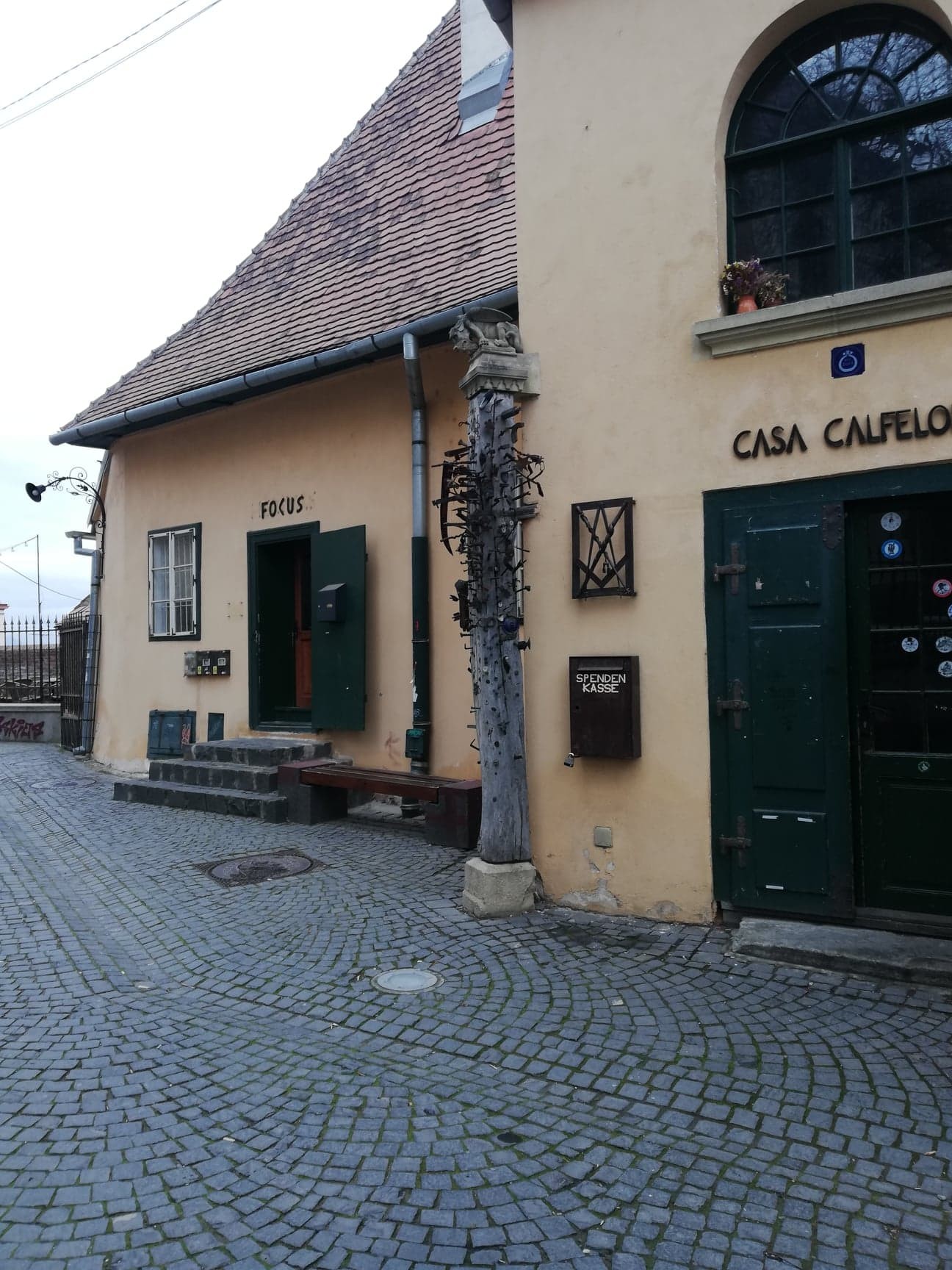
But in the 20thcentury, due to the World War 2, the communist regime and the departure of the Saxons from Transylvania, the situation changes dramatically and the tradition of the free craftsmen disappears.
In the beginning of the 21st century, a few journeymen arrive in Sibiu and are given accommodation and work by the evanghelical parish, so the house located in Piața Huet starts to be restored by them.
Thus, in the following years, many journeymen arrive in Sibiu to learn and work with the traditional techniques, an association being also formed.
Who are the journeymen? The long history and their activity
I can say that the journeymen are quite similar with the Erasmus students of today. Historically, the first guilds appear in the 12th century. Back then, they are sending the craftsmen, both men and woman, on an initiation journey to improve their knowledge in the practiced craft.
Later on, in the 15th century, the journey becomes mandatory for every young craft men. The duration of the trip can last between 3 and 12 years depending on the guild.
When the young crafts men arrive in a new city, he or she is guided by the ruler of the guild towards the workshop in which the journey men will work. Usually, he or she is introduced in the art of carpentry, goldsmithing, blacksmithing or stone work.
How the journeymen are recognised?
Since the beginning, the journeymen contributed to the development of Europe and through the journeys, they ensured and sustained the exchange of knowledge and culture throughout the entire continent.
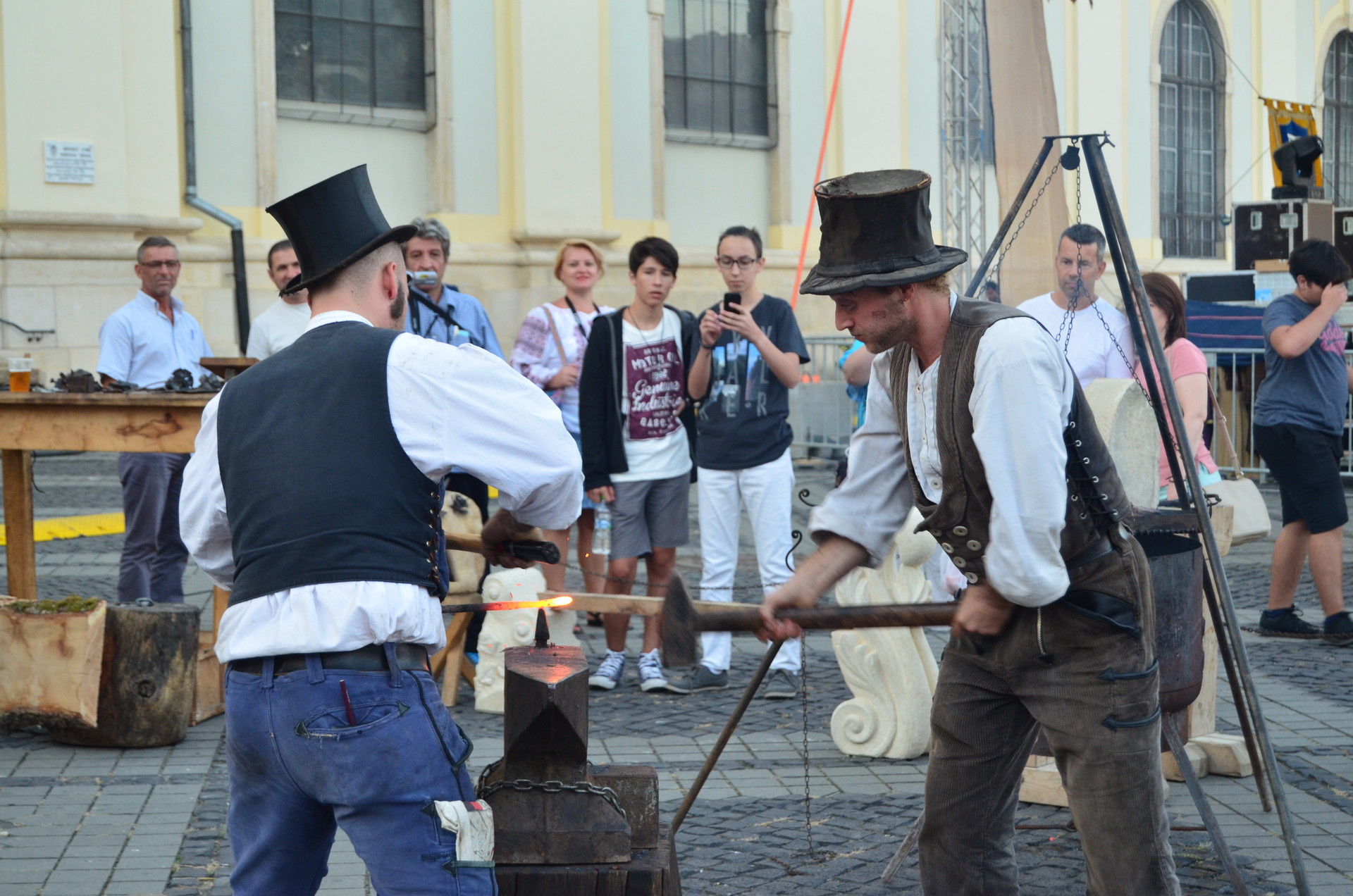
When travelling to Sibiu, if people see on the streets somebody wearing unusual flared pants, a white shirt and a black broad – brimmed hat, they should know, that’s a young journeymen. An opportunity to see the journeymen in action is the medieval festival - happening in Sibiu every year in the late summer - when they are organising workshops to which visitors can take part.
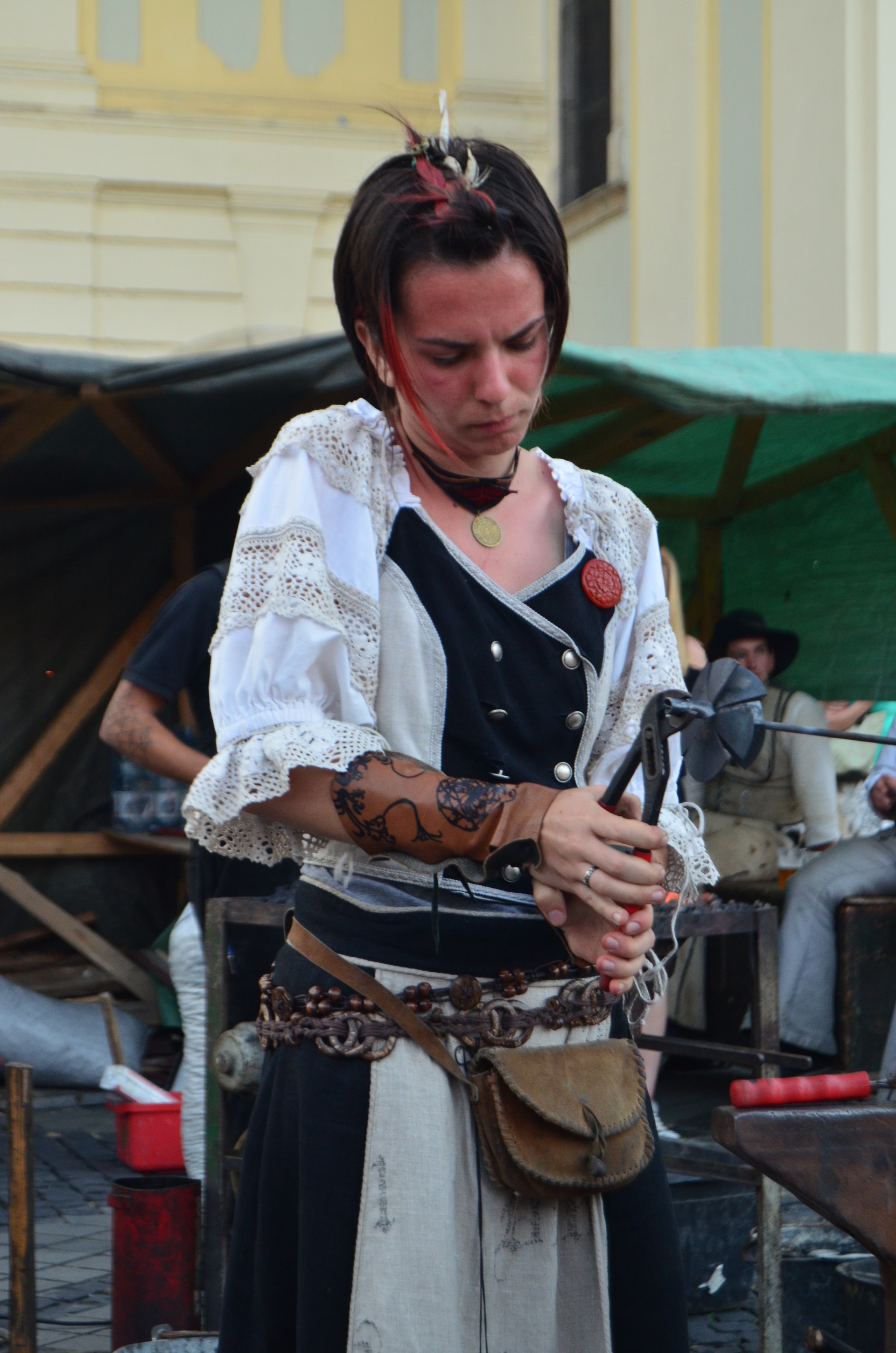
The wooden pillar filled with nails. Not the hands matter, but the eyes
The “Calfelor House” from Sibiu is the first of this type located outside the boarders of Germany, Switzerland or France and on its renovation have worked journeymen coming from different countries and associations. By the way, it is known that there are 700 - 800 journeymen left in the world.

We can take a look at “Casa Calfelor” only from the outside. A catchy element, placed in front of the house entrance is a wooden pillar on which, according to the tradition, every journey men, when leaving must leave on it for having good luck in the upcoming journey, a memory consisting in a coin, a cap of beer or a nail, thus the wood is full with various types of metallic nails.
On a piece is written interestingly the following: “Nu vezi cu mana, ci cu ochii”, translated as “You don’t see with your hand, but with your eyes”, which is probably one of the slogans behind the work of a journeymen.
Photo gallery
Want to have your own Erasmus blog?
If you are experiencing living abroad, you're an avid traveller or want to promote the city where you live... create your own blog and share your adventures!
I want to create my Erasmus blog! →

























Comments (0 comments)